Introduction to Wren Identification in Pennsylvania
Wrens are known (and typically beloved) even by casual birdwatchers.
As a family, they are generally characterized by slender, curved bills, a mostly brown and reddish color palette, and barring on their tails. Of course, any birds that are small and brownish fall into the "Little Brown Bird" trap for less-experienced birders.
Luckily, there aren't too many species to worry about, and the identification challenges aren't too bad with the ones found in the northeast.
What Wrens are found in Pennsylvania?
Pennsylvania has 4 wren species that are regularly expected: House Wren, Winter Wren, Marsh Wren, and Carolina Wren. Additionally, Sedge Wren, Bewick's Wren, and Rock Wren have been recorded, but are considered rare.
I would recommend focusing on the first 4, and ignoring the other ones until you are very comfortable with all of the expected bird species in Pennsylvania, since you are very unlikely to encounter them.
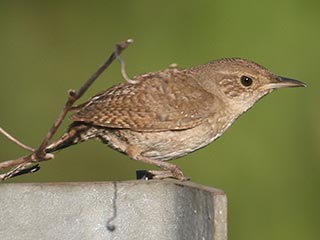
House Wren
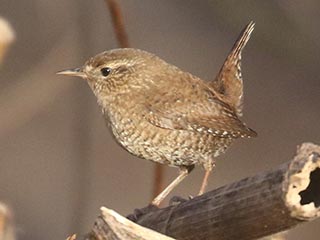
Winter Wren
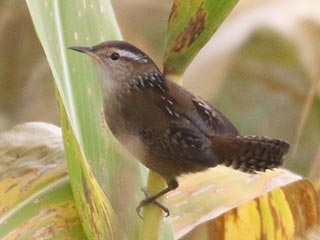
Marsh Wren
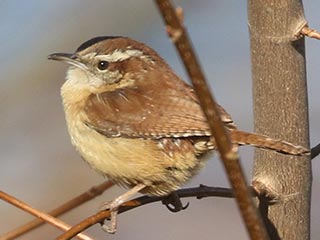
Carolina Wren
Carolina Wren
We'll start with the easiest. Carolina Wren is a year-round resident of Pennsylvania, and has undergone northward range expansion in recent decades, so it's pretty established in the state.
The overall tones of Carolina Wren are decidedly reddish, with reddish-brown upperparts and more of a rusty wash on underside. They have a very prominent white eyebrow.
Their vocalizations are quite loud, especially the rolling "tea-kettle, tea-kettle, tea-kettle" song (Example). You'll also often hear a chatter (Example), and a rolling trill call (Example). It's also very common to hear a female respond with a chatter to a male's song (Example).
You'll often find them in human habitats, and it's a common yard species for many people.
They are fairly similar to Bewick's Wren, discussed below, but those are completely gone from Pennsylvania at this point, so don't worry about it.
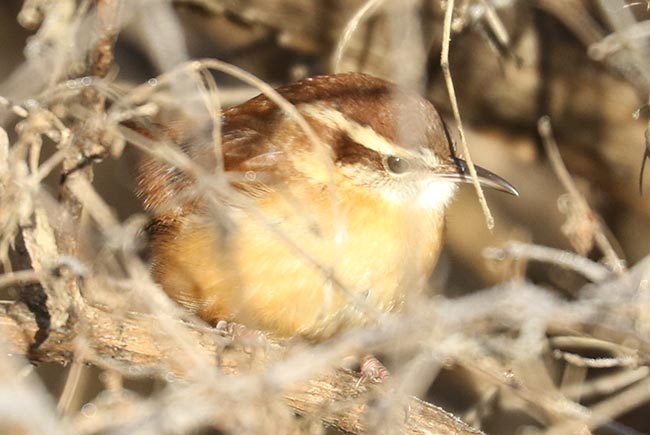
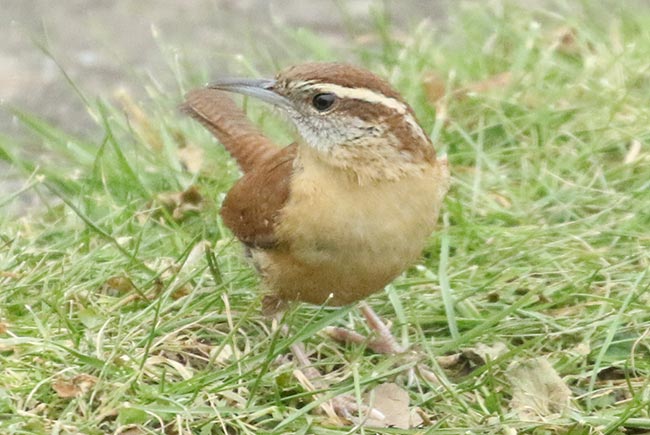
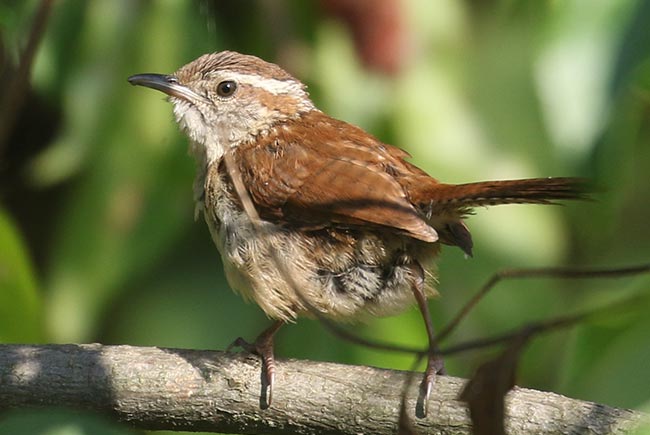
House Wren
Of the expected wrens in Pennsylvania, House Wren is probably the least distinctive visually. They are plain, with a drab brownish overall color and barely any eyebrow (typically just a hint of one).
They have a complex, bubbly song that's hard to describe, but very recognizable and quite distinctive in Pennsylvania. They also have various chit and rattle calls (Example).
This species is very tolerant of humans, and will nest in yards with nest boxes. This is the wren you will see the most frequently, since they perch in the open more than the others.
They pretty much clear out of Pennsylvania for the winter, but are extremely common in the warmer months.
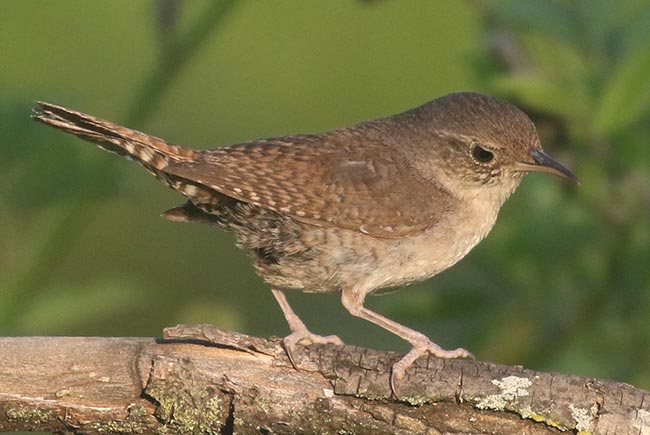
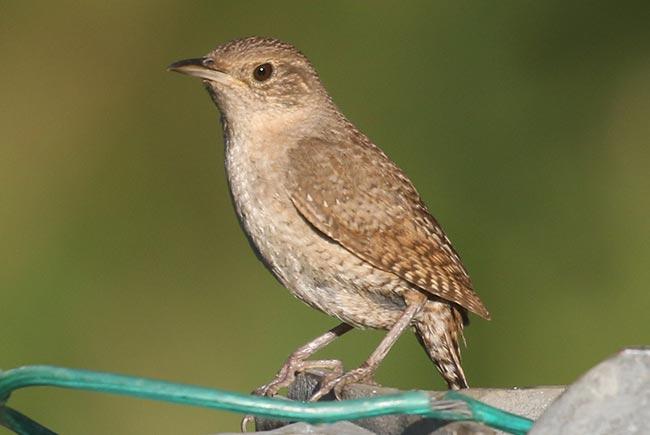
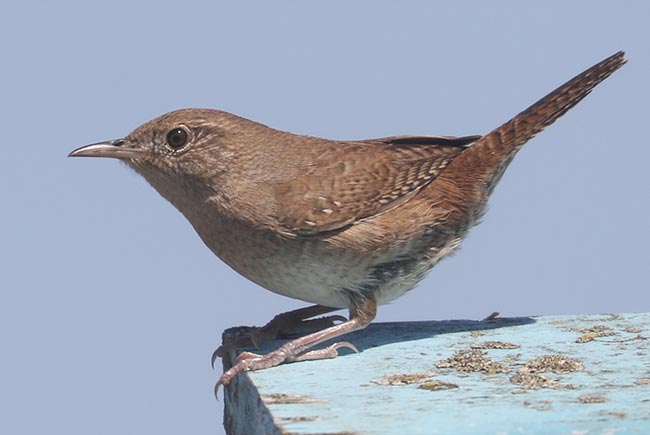
Winter Wren
These are a personal favorite. Winter Wrens are very small and darker wrens. They have a short pale eyebrow (nowhere near as prominent as Carolina Wren, but more prominent than House Wren), and often raise their short tail up vertically. Their bill is also smaller than the other wrens in Pennsylvania.
Behavior-wise, they are often twitchy and almost mouse-like in their movements. They are usually in heavy brush and can be hard to see.
Winter Wren is present year-round in Pennsylvania, but they are somewhat habitat restricted, and their range in the state shifts throughout the year. The species often nests in higher elevation forests, but are found in general brushy habitat in winter. I often see them near water, especially little streams or damp areas (but not always). They are not very likely to turn up at your house unless the adjacent habitat is very good for them.
They have an extremely long and complex song (Example). There's nothing else that sounds like it in Pennsylvania.
Their call is extremely helpful for detecting them, and it's how I find most of the ones I see (Example). It is very similar to a Song Sparrow call note, but with a slightly more punchy quality to it and often given in tighter groups of calls than Song Sparrow. They also have a chatter call you'll hear sometimes (Example).
Pacific Wren is extremely similar (they used to be considered the same species), but is not covered here because one has never been confirmed in Pennsylvania. They primarily differ in the nuances of the voice.
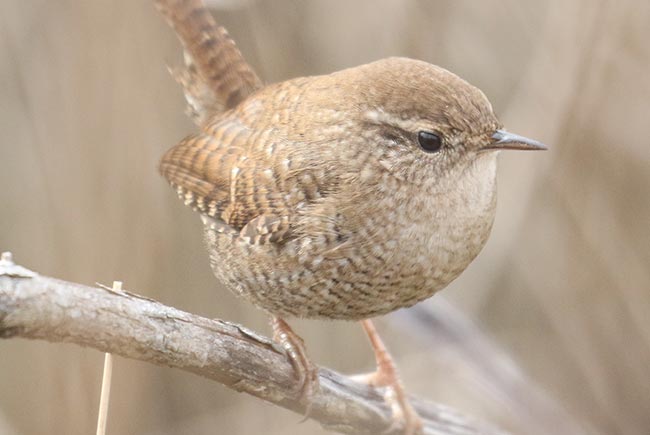
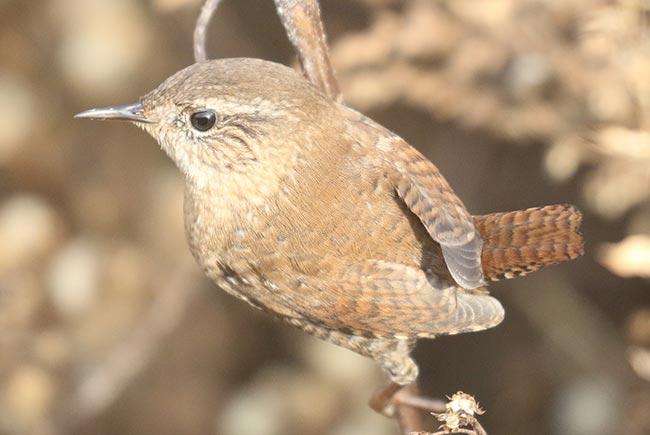
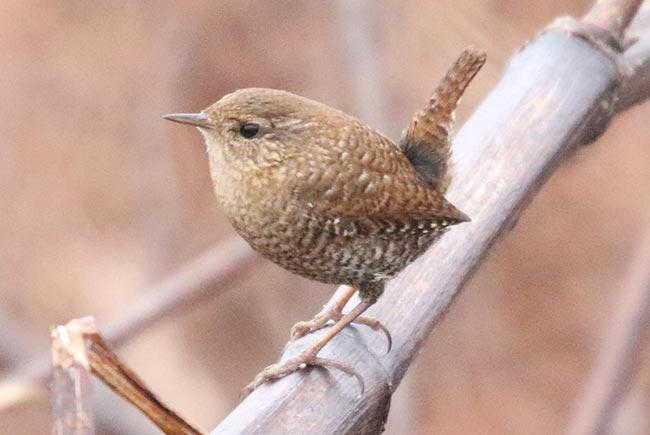
Marsh Wren
Marsh Wrens have an overall rusty color and a fairly long bill. They show a white eyebrow, dark crown, and dark patch on the back with fine white streaks.
Their habitat is typically cattails, but they can be in other damp brushy areas at times. The species is fairly uncommon for the most part in Pennsylvania, but can be locally-expected in certain places with good habitat. It's definitely not a species you'd expect to find in your yard (unless you have a nice wetland!).
In my experience, this is the hardest of Pennsylvania's expected wren species to actually see. Birds not on their breeding territory are generally extremely well-hidden in cover, and even if you know one is present, it can be really hard to get a look at it.
This is another species where vocalization really helps to find them. You'll hear either their song, which is sort of a high-pitched electric gurgling (Example), or their call (Example), which is sort of similar to the chip notes of Winter Wren, but less punchy and more of a "chit" sound — similar in quality to Ruby-crowned Kinglet, but different in pattern (Ruby-crowned Kinglet vocalizations are covered in my Kinglet Identification article).
Visually, they are most similar to the rare Sedge Wren (covered in the rare wren section below).
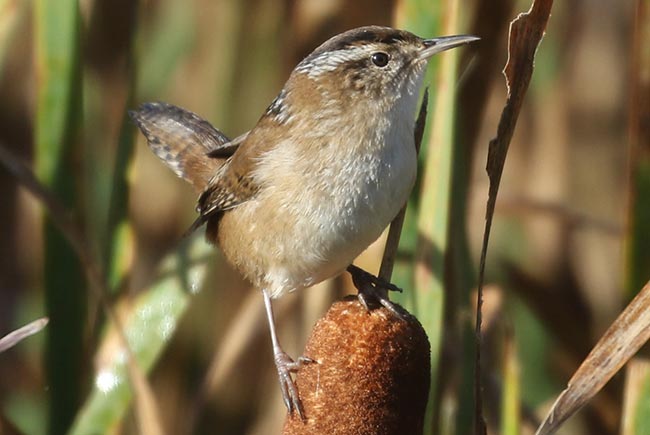
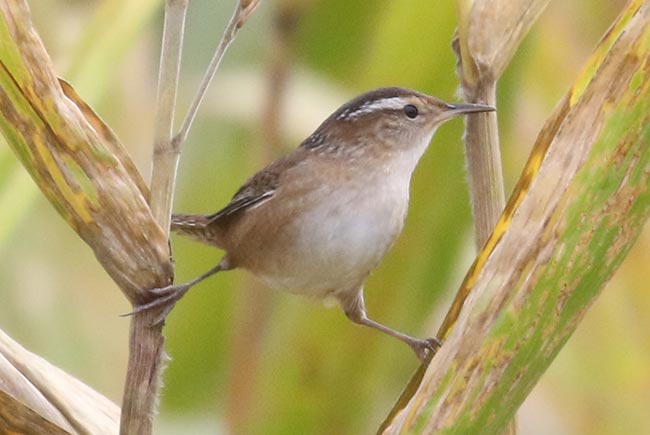
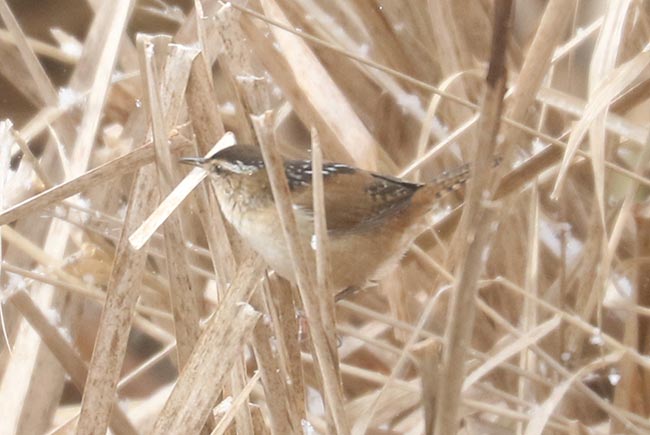
Rare Wren Species in Pennsylvania
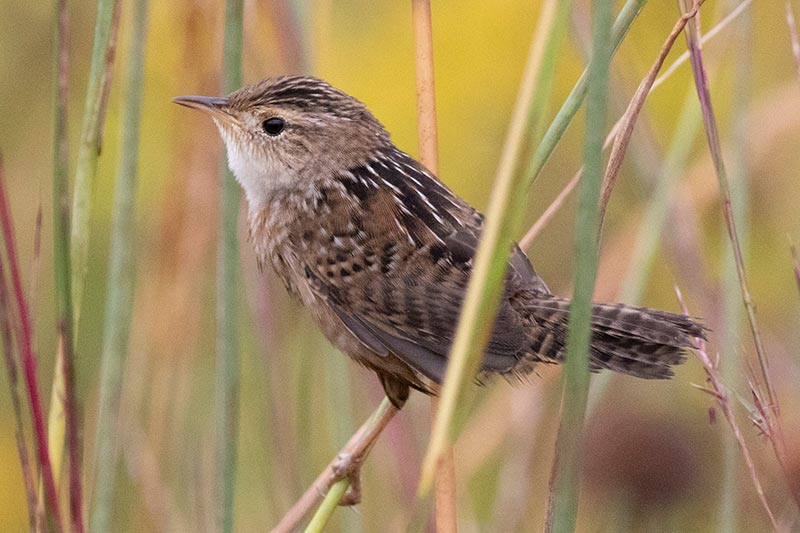
Sedge Wren
Of the rarer wren species in this section, Sedge Wren is the most expected in Pennsylvania, with a few records most years.
They are most similar to Marsh Wren, but are paler and have boldly barred wings and a streaked crown (compared to the solid dark crown on Marsh Wren). They typically aren't going to be found in wetlands, but rather in damp grassy/weedy areas.
Bewick's Wren
Bewick's Wren is an "extirpated" species that formerly nested in Pennsylvania, but hasn't been seen in the state since the 1970s. Overall, there was an extreme population decline in the east in the 1900s. It's doubtful that you would encounter one in Pennsylvania at this point, and most reports would probably be misidentifications of Carolina Wren.
Rock Wren
Rock Wren is very rare overall in the east, but turns up occasionally. As of 2023, there is only one record in Pennsylvania, which was during October 2018 at Dixon Meadow Preserve in Montgomery County.
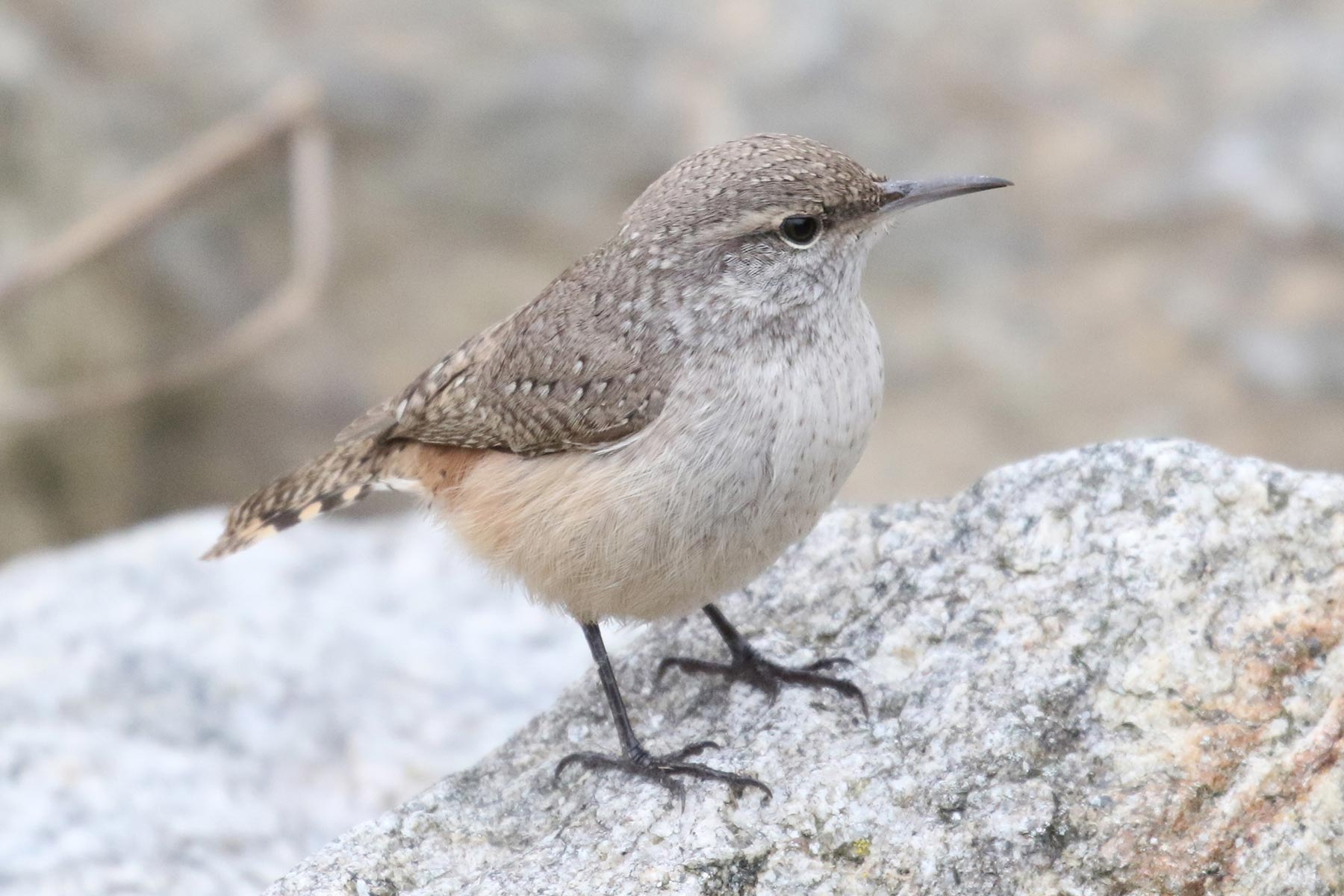
Rock Wren
That wraps up Pennsylvania's wren species. If you are interested in more Pennsylvania bird info, check out my Most Common Breeding Birds in Pennsylvania article.
All photos © Bobby Brown, except Sedge Wren © David Brown.
Like this? Want to help fund more tools and projects on our site?
Support LycoBirds